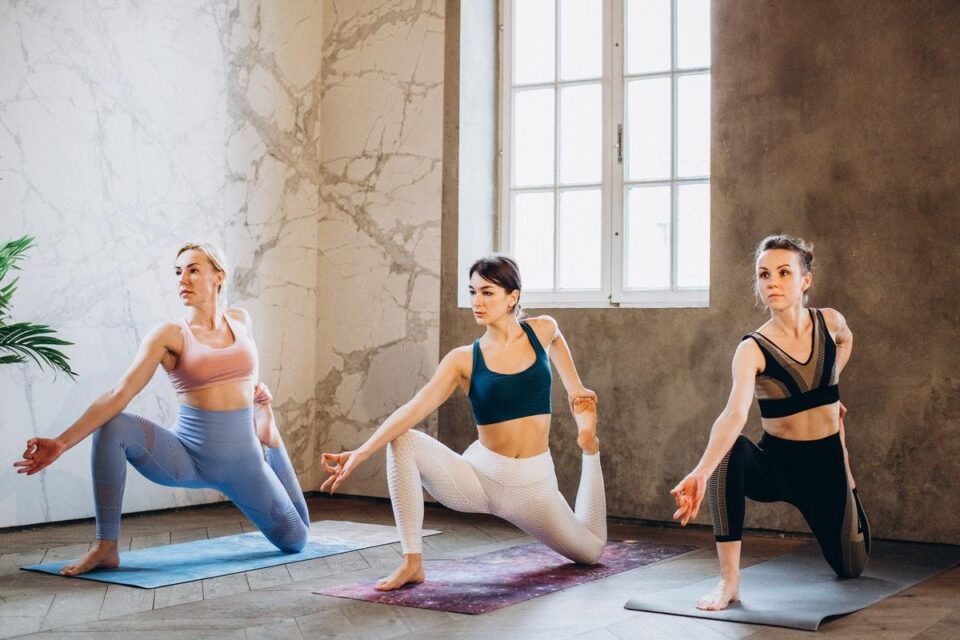Many of us think of Body balance as a new activity, and, however, it was in 1998 when “Les Mills” (one of the most important fitness groups in the world) made this training program known.
Table of Contents
What is Body Balance?
The Body balance is a training program inspired by Yoga, Tai Chi and Pilates that fundamentally improves flexibility and strength.
Its controlled breathing exercises, concentration, stretching, movements and poses adapted to music result in a holistic session that brings students to a state of harmony and balance.
Why Is It So Fashionable 20 Years Later?
From my point of view, several reasons have led the Body balance to its current boom:
The combination of several sports modalities (Yoga, Tai Chi and Pilates). As a popular saying goes: “in variety is taste”, and if people like something, it is the variety of exercises; in this case, in the same session, you run three different sports modalities.
The level of stress to which we are currently subjected. If there is one thing that everyone agrees on, it is that since the advent of technology, everything is going much faster, and stress has skyrocketed. The exercises of the modalities that Body balance combines act directly in reducing stress.
Increased strength. For a long time, we have been counting that humans’ most important basic physical capacity is strength. In the case of Body balance and thanks to Pilates, it mainly favors the gain of strength, helping to develop our daily life much more effective.
Increased range of motion. We have also been saying that we must focus on a range of motion and encompass flexibility. The greater our range of motion within our exercises. The more effective the application of force in our day to day life.
Therefore, Body balance makes us stronger, more effective and helps us cope with our day to day in a much more relaxed way.
What is a Body Balance Class Like?
The 55-minute classes consist of 10 Tracks (songs) adapted to the different body parts, varying their melody according to one modality or another. And the best thing is that you can practice body balance at home with the multitude of videos with virtual classes or with song lists that you will find on streaming music platforms.
- General warm-up, the session begins through gentle Tai Chi movements combined with breaths.
- Specific warm-up, through yoga and its “greetings to the sun” the joints are mobilized, and the muscles of the whole body are activated in a more intense way.
- Legs, through different yoga postures (mainly warriors) and transitions from one to another, the toning of the quadriceps, hamstrings and glutes are worked.
- Through different yoga postures such as the tree, the crescent or the warrior III, Balance seeks to improve body control and postural correction.
- Hip width, combining different yoga postures such as a downward-facing dog with hip opening, the dove or half-lotus, and the transition movements, we work to achieve maximum joint mobility of the pelvis.
- Core: within the Pilates routines, we find exercises such as roll-up, hundred or scissors through which the work of the abdominal muscles is sought.
- Back, through yoga figures (downward-facing dog or baby posture) and Pilates exercises (roll down, spine stretch forward or Rolling like a ball), the back muscles are strengthened along with the hamstrings and glutes.
- Twisting, through the execution of yoga postures (the triangle, the chair or the angle) together with gentle tai chi movements, seeks to enhance the mobility of the spine and stimulate the internal organs.
- Hamstrings, through yoga postures (reverence to the warrior, humble warrior or pincer), seeks to elongate the back muscles of the legs “naturally shortened” by daily activity.
- Relaxation and meditation: finally, with very soft music and breathing and meditation, we relax, looking for the connection of our and mind.
Body Balance Benefits
Physical Benefits
- Muscle toning avoiding muscle imbalances since all exercises are carries out harmoniously in transition from one to the other.
- The “CORE” work, thanks to Pilates, improves the stability and body position of the user.
- The mobility to which we subject all parts of the body and the strengthening of the posterior chain especially helps to prevent back problems.
- Increases range of motion (“flexibility”), helping prevent possible future injury.
- Stylized body due to the isometric work while maintaining the different postures.
Mental benefits
- Thanks to breathing, muscle stretching and meditation, stress levels decrease exponentially.
- Thanks to the combination of postures and exercises and breathing, the person’s level of concentration and body awareness increases.
- You relax while training thanks to soft music, stretching combined with muscle toning, and the rhythm and progression of the exercises, which end in the final relaxation.


